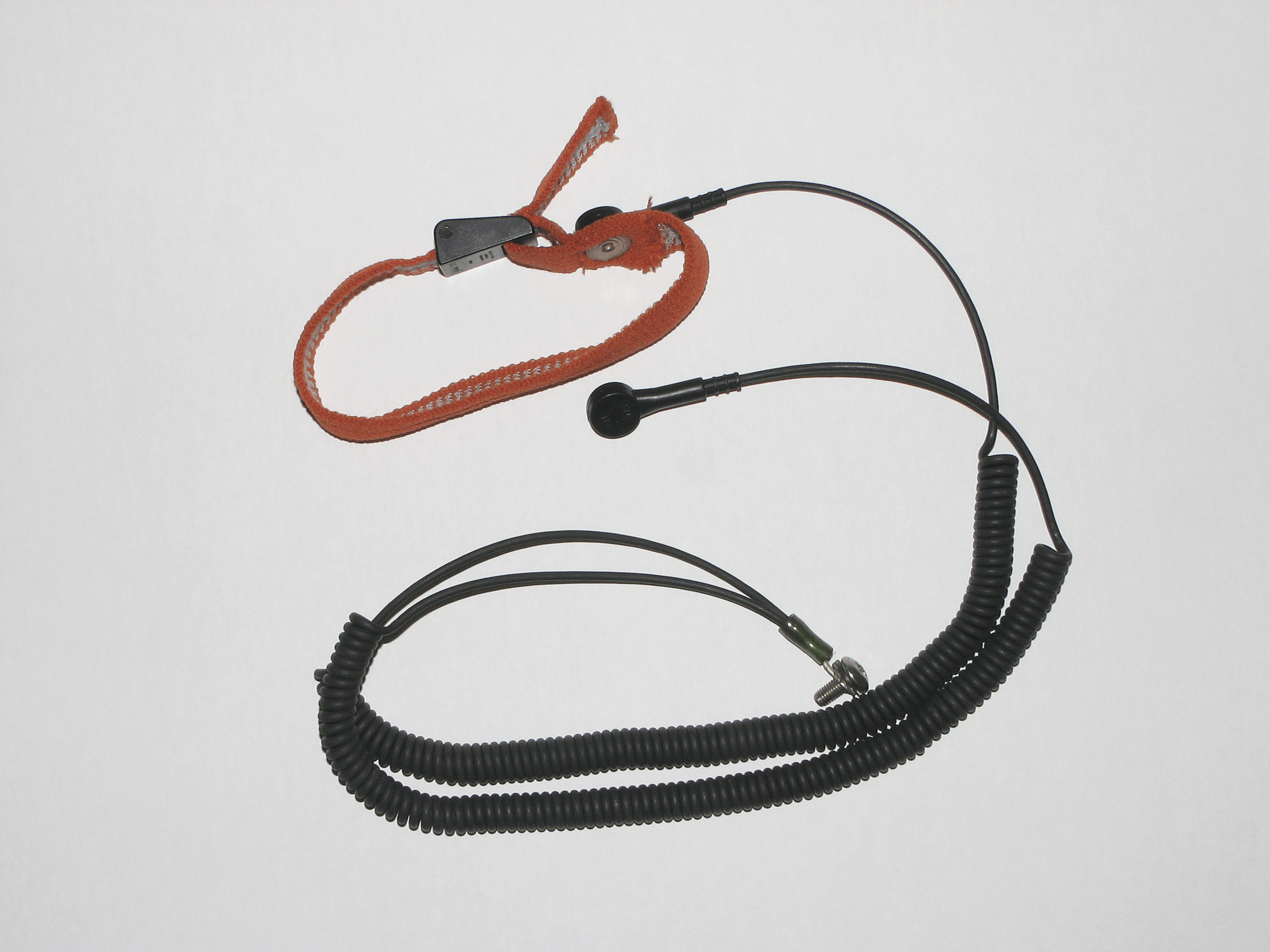Grounding Straps Information
 Grounding straps are anti-static devices that are used to protect people and electronic equipment from electrostatic discharges (ESD) by routing the electric current to a safe ground. They are designed to protect personnel who come in contact with conductive or dissipative surfaces, and to provide grounding for electrically-powered equipment.
Grounding straps are anti-static devices that are used to protect people and electronic equipment from electrostatic discharges (ESD) by routing the electric current to a safe ground. They are designed to protect personnel who come in contact with conductive or dissipative surfaces, and to provide grounding for electrically-powered equipment.
Specifications
General specifications for grounding straps include strap type, strap material, and strap shape. Performance specifications include gauge type and conductor size, as well as current capacity and number of wires. In North America, grounding straps may comply with published safety standards from Underwriters Laboratories (UL) or bear the CSA mark from the Canadian Standards Association (CSA). In Europe, these grounding products may bear the CE mark or comply with the Restriction of Hazardous Substances (RoHS) directive from the European Union (EU).
Types
Selecting grounding straps requires an analysis of strap types, strap materials, and strap shapes.
Choices for strap type include:
- braided
- mesh or grid
- sheet or strip
- solid wire
Braided grounding straps are formed by interlacing a wire or wires. Wire mesh and wire grid grounding straps are also commonly available. Grounding sheets and grounding trips are usually rectangular. Most solid straps are made of a single, solid wire.
With regard to materials of construction, the conductors in ground straps are usually made of:
- aluminum
- copper
- tinned copper
- stainless steel
- nickel-plated materials
- silver-plated materials
Choices for strap shape are usually listed as flat or tubular. Grounding straps with other unlisted shapes or specialized conductor materials are available from some suppliers.
Features
Performance specifications for grounding straps include American wire gauge (AWG) and international conductor size. American wire gauge (AWG) is a U.S. standard for non-ferrous wire conductor sizes. Non-ferrous materials include copper and aluminum. The term "gauge" refers to the wire's diameter. The higher the gauge number, the smaller the diameter and the thinner the wire. Thicker wire carries more current because it has less electrical resistance over a given length. Typical household wiring is AWG 12 or 14. Telephone wire is usually AWG 22, 24, or 26. Outside of North America, the wire conductor sizes in grounding straps are measured in square millimeters (mm2). Current capacity and number of wires are also important specifications to consider when selecting grounding straps.
Related Information
CR4 Community—Forklift Operators Get Static Shock at Elevator Pendant
Engineering360—Static Control Products Information
Image credit:
Adamantios / CC BY-SA 3.0
- vehicle grounding straps
- ESD mat
- copper grounding strap
- aircraft grounding straps
- electrical grounding mat
- navy aircraft grounding straps
- tinned copper braid
- tinned copper mesh
- tinned copper tubular braid
- copper tubular braid
- grounding braid
- silver plated braid
- stainless steel ground strap
- tinned copper ground strap
- flat copper grounding straps
- grounding straps for steel drums
- poly tank grounding straps
- solid tinned copper wire
- stainless steel braided grounding straps
- electrical grounding straps
- pipe grounding straps
